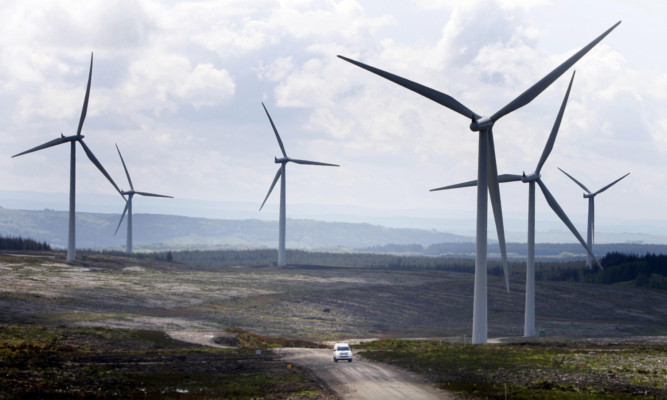The Scottish Government has denied First Minister Alex Salmond has U-turned over apparent plans to halt the spread of windfarms across Scotland’s scenery.
It was reported Mr Salmond had apparently told prominent hiker and SNP supporter Cameron McNeish he was considering a policy suggesting wind farms should not be approved in certain areas except for special cases.
Maps drawn up by Scottish National Heritage (SNH) will identify around 28% of the Scottish countryside as “wild land”, predominantly in the north and west Highlands, to be protected.
The Scottish Conservatives said the news made it look like the First Minister was readying himself to U-turn on his renewables policy.
However, a Scottish Government official claimed Mr Salmond has always made it clear a huge chunk of the country’s green energy potential and future development will be offshore rather than onshore, so there is no U-turn, just a development of policy along the lines previously indicated.
Conservative MSP for Mid Scotland and Fife Liz Smith said: “This development does not tie with the aggressive rhetoric both the First Minister and the wider Scottish Government have adopted on wind energy over the past few years.
“They know councils and communities have grave reservations about windfarms, and he has ignored them on a regular basis, while also insisting windfarms not only don’t harm tourism, but actually benefit it.”
A spokeswoman for the Scottish Government said: “We believe that wind energy suitably located, and subject to a planning process which gives the right level of protection to Scotland’s important landscapes can make a huge contribution to meeting Scotland’s future energy needs.
“Alongside planning authorities, SNH, RSPB and others the Scottish Government will work closely to ensure that construction and habitat management of windfarm developments is exemplary and that impacts are minimised.
“We will consult soon on a new draft Scottish planning policy and the national planning framework main issues report.
“This will allow us to hear a full range of views on how wild land character should be protected by the planning system.”
